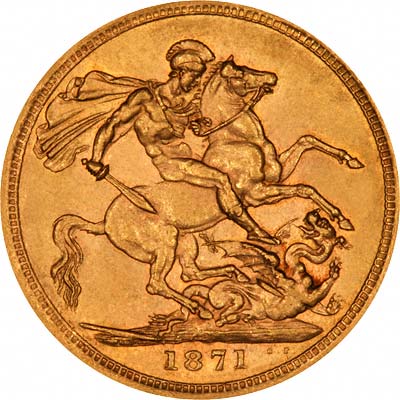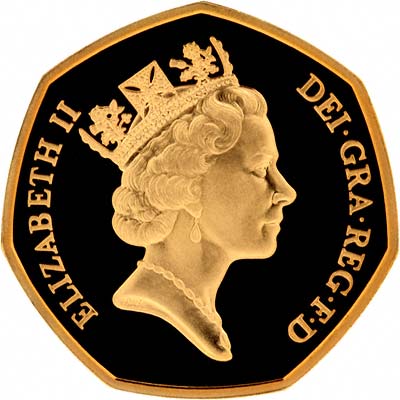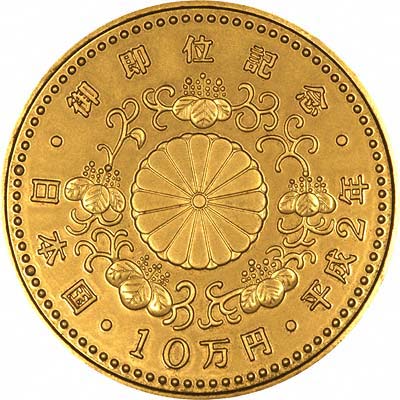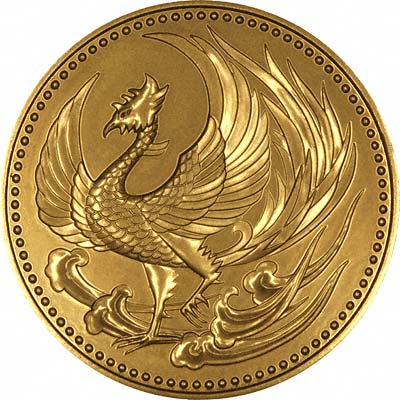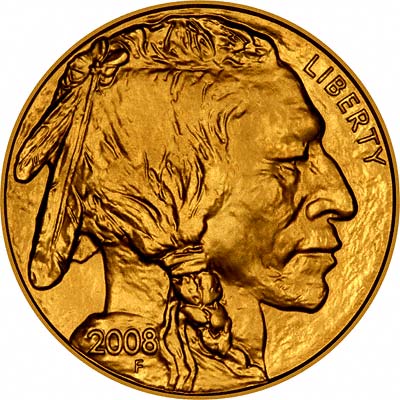Logam Mulia Gold Bar Price (EMAS LANTAKAN 24 karat)
Thursday, 14 May 2009
Gram Price per Bar (Rp) Price per Gram (Rp)
1 gram : Rp 352.500 352.500
2 gram : Rp 671.500 335.750
2.5 gram : Rp 831.000 332.400
3 gram : Rp 990.500 330.167
5 gram : Rp 1.633.500 326.700
10 gram : Rp 3.241.000 324.100
25 gram : Rp 8.038.500 321.540
50 gram Rp 16.023.000 320.460
100 gram : Rp 32.002.000 320.020
250 gram : Rp 79.840.000 319.360
1000 gram : Rp 319.000.000 319.000
The availability of goods can change anytime without confirmation.
Indented goods are due on -----
Maximum Buy per Customer 250 Grams
Buyback price per gram Rp289.000
Selisih harga jual dan harga beli Emas Lantakan 5 gram :
Rp 326.700/gram – Rp 289.000/gram = Rp 37.700,-
DINAR EMAS (emas 22 karat @ 4.25g)
14 - May - 2009 Jam 12 : 30
Jual (Rp) : 1,362,750
Beli (Rp) : 1,308,240
Selisih Harga Jual dg Harga Beli (Rp)/gram : Rp 12,825
Read more...

Kamis, 14 Mei 2009
Emas Lantankan vs Dinar Emas
Sabtu, 02 Mei 2009
Kejadian "Jatuhnya Nilai Uang Kertas di Jerman seharga Kayu Bakar th 1923 terulang di Zimbabwen 2008"
Tragisnya Nasib Uang Kertas di Jerman tahun 1923 Seorang ibu lebih suka membakar uang untuk menghangatkan ruangan daripada membeli kayu bakar – karena harganya sama !
Seorang ibu lebih suka membakar uang untuk menghangatkan ruangan daripada membeli kayu bakar – karena harganya sama !
Menceritakan Kejadian di Jerman tahun 1923 Bapak yang mendorong uang dalam gerobak tersebut seorang buruh yang harus secepatnya membawa gaji yang baru diterimanya ke toko roti, karena kalau telat uang dalam gerobaknya tidak lagi cukup untuk membeli roti – saking cepatnya inflasi.
Bapak yang mendorong uang dalam gerobak tersebut seorang buruh yang harus secepatnya membawa gaji yang baru diterimanya ke toko roti, karena kalau telat uang dalam gerobaknya tidak lagi cukup untuk membeli roti – saking cepatnya inflasi.
Zimbabwean with 'plenty' of Cash
 The picture shows a Zimbabwean carrying pile load of cash to buy something. Seems like a lot of money.... but fact is the pile of cash is probably worth less than 100 US dollar
The picture shows a Zimbabwean carrying pile load of cash to buy something. Seems like a lot of money.... but fact is the pile of cash is probably worth less than 100 US dollarLoaf of Bread Costs $16 million Zimbabwe Dollars
With rising inflation and election turmoil, the prices of basic food items have skyrocketed in Zimbabwe. A loaf of bread now costs 16 million Zimbabwe dollars.
Zimbabwe has had monetary problems for a long time, and it isn’t getting better with the recent elections. The opposition claimed it won the elections, but Mugabe is reluctant to give up power.
The rate of inflation is rising at a staggering rate and has reached 100,000 per cent. A loaf of bread now costs 16 million Zimbabwe dollars.
In January, the Zimbabwe government issued a 10 million currency note, this week they introduced a new 50 million dollar bill which is equivalent to $1.25 USD on the black market (officially it is worth $1,666 USD).
Zimbabwean's currency has tumbled to a record low of 25 million Zimbabwe dollars to one US dollar. 100 US dollars could exchange for nearly 20 kg of local currency.
Frankly, it's hard yo imagine how a country would manage to get themselves into the troubled situation. My countrymen would be crying like babies if our annual inflation rates reached 10% .... 100.000% inflation? that unthinkable.
The new 50 million bank note will help Zimbabwean people buy three loaves of bread.
Other recent news reported peanuts now cost 700 million dollars a bucket in the region.
According to AP, this is the third time the nation’s central bank has issued a higher denomination note in response to record inflation. Furthermore, some of these currencies have an expiration date.
Most people will probably agree this is a sad state of affairs for Zimbabwe; Mugabe should leave before he does any more lasting damage to his country.
YOU MIGHT THINK YOU HAVE SEEN IT ALL - BUT..
I think that most banknote collectors, both serious and novices, realise that inflation often does funny things to the number of 'noughts' placed on banknotes by some Governments - and that some very serious 'nought' adding was undertaken by Germany during the period 1922 - 1924.
This period of rampant inflation in Germany is well documented in previous editions of this newsletter, on the Internet - and elsewhere - so I do not intend to repeat the various political and economic reasons this occurred. Let us say that the results eventually helped shaped the destiny of the whole world.
However, if your hobby has lead you in this direction and, if you are still learning about the period and are trying to understand the scope of the problem - just imagine our Government authorizing scores of printing businesses around the nation to churn out paper money, as fast as their presses can work, in values that have up to 12 noughts after the first number and, then, the notes becoming so worthless - in just a few hours - that they are being used to light the fire because they are not as expensive as wood.
In Germany, notes were also used as wallpaper for the same reason - and some towns and villages were also printing and using their own local currency called Notgeld or Gutschein, because the official Reichbanknotes were becoming valueless before they could be banked or used - but that is another well-documented story. These privately produced Gutschein notes were basically 'tokens' and used to assist local barter and, because they were usually backed by regional products and services, they held buying value - at least for a slightly longer time - more efficiently than the government Reichbanknotes.

The first early morning's wages - employees demanded time off after they were paid to buy essentials before the notes lost value.
Buying a cabbage - a shopping basket of notes from the buyer and a vegetable basket for the seller - who would need to use them fast.
Cheaper that sticks - millions of Marks used to get the stove going. Money being baled in 1923 as waste paper for recycling.
For those lovers of numismatic varieties, the challenge of German paper banknotes at this time, 1922 - 1924, would send them into raptures.
Due to the fact that notes were being printed simaltaneously in various places, it meant that a number of printing plates had to be used - and slight differences have been noticed in designs. However, this may have been a deliberate system to enable controllers to ascertain where a note was printed.
Some of the most obvious differences in any particular value German banknote of this era are things like varying paper watermarks, serial number style varieties, minute design variations (usually only noticed under magnification), colour changes, and - on occasion - some very noticeable additional artwork. These notes have been signed by the same people, have the same value and the same issue date.
A few of my own easily noticed examples are shown below but, regretably some details are not identifiable from these scans.
However, if you are browsing the markets or shows for cheap European notes - particularly Germany of the 1920's - keep an open mind and check more than one note, if they are available ....... and, bear in mind, that Germany was not the only European place that has had mega-inflation.

In some other instances, either an overstamp of some description was used to rename and revalue older banknotes instead of adding all those obvious 'noughts' that tended to frighten the German people as they saw their money loosing value as each zero was added and new designs were coming out faster than the old ones could be spent. Sometimes words only were used and, sometimes, the actual denomination value number was written in a way to lessen the impact, older lower notes were used up and printing was done on one side only on any new notes to save costs and time.
 Read more...
Read more...
Jika sudah Jatuh "Betapa tidak Berharganya Uang Kertas"....
1. Gila, Inflasi di Zimbabwe 200 Juta Persen! Getty Images/DESMOND KWANDE
Getty Images/DESMOND KWANDE
Seorang warga Zimbabwe memegang uang kertas baru senilai 500.000 dolar yang diperkenalkan ke publik pada saat negara ini terus dilanda krisis keuangan pada 22 Desember 2007 di Harare.
Rabu, 3 Desember 2008 | 18:18 WIB
HARARE, RABU- Otoritas moneter Zimbabwe menerbitkan uang kertas pertama pecahan 100 juta dolar, menyusul kian meroketnya tingkat inflasi di negara tersebut hingga mencapai lebih dari dua ratus juta persen.
Zimbabwe menerbitkan tiga denominasi baru mata uang kertas, termasuk mata uang kertas pecahan 100 juta dolar, karena negara miskin ini berjuang mengatasi inflasi yang berlari kencang. Demikian dilaporkan media pemerintah, Rabu (3/12).
Bank Sentral Zimbabwe (The Reserve Bank of Zimbabwe/RBZ) mengatakan, penerbitan uang kertas pecahan baru itu menyusul sebuah kajian baru-baru ini dari pembatasan penarikan uang tunai.
Pembatasan telah direvisi naik menjadi 50 juta dolar Zimbabwe untuk perorangan dan 100 juta dolar untuk pemegang rekening perusahaan, The Herald mengatakan.
Sebelumnya, batas penarikan uang tunai untuk rekening perorangan adalah 500.000 dolar, sementara perusahaan dizinkan menarik satu juta dolar per hari.
Pecahan baru uang kertas --100 juta, 50 juta, dan 10 juta dolar-- dilakukan ketika para penyimpan dana harus menganri panjang di bank-bank dan anjungan tunai mandiri (ATM) untuk menarik uang. Uang kertas pecahan baru itu akan mulai beredar pada Kamis besok.
Gubernur RBZ Gideon Gono, baru-baru ini mengumumkan bahwa bank sentral sedang bekerja untuk menjamin para pekerja memiliki cukup uang tunai selama musim pesta.
Penerbitan uang kertas baru itu kurang dari sebulan, setelah bank sentral memperkenalkan uang kertas pecahan 500.000 dolar dan 100.000 dolar, untuk bertransaksi dengan harga barang-barang pokok yang membubung tinggi.
Uang kertas 100.000 dolar Zimbabwe nilainya hanya setara dengan satu dolar AS yang digunakan secara luas paralel di pasar gelap, dan hanya separuh jumlah kebutuhan untuk membeli satu papan roti.
Selama tahun ini, dua puluh tujuh denominasi mata uang baru telah diperkenalkan di Zimbabwe. Suatu gambaran sebagai sebuah model ekonomi dan sebuah keranjang roti regional, ekonomi Zimbabwe telah jatuh dalam satu dekade terakhir, dan disana sekarang sedang kekurangan makanan pokok seperti gula dan minyak goreng.
Ketika Gono ditunjuk sebagai gubernur bank sentral pada November 2003, inflasi Zimbabwe tercatat 619,50 persen, namun hingga Juli, inflasi tahunan telah mencapai 213 juta persen.
MSH
Sumber : Ant
Artikel Terkait:
* Kehabisan Uang, Tentara Zimbabwe Mengamuk
* Zimbabwe, Wabah Kolera Berlanjut, Ratusan Orang Tewas
* Wabah Kolera Makin Mengganas di Zimbabwe
* Jutaan Warga Zimbabwe Terancam Mati Kelaparan
* Waw! Uang Kertas 100 Miliar Dollar Diedarkan
*Inflasi 1 Juta Persen, Sepotong Roti Seharga 12 Mobil Baru
Read more...









